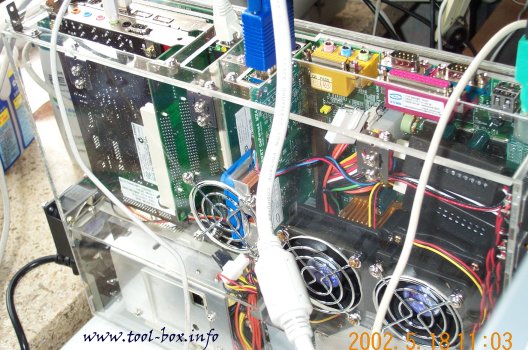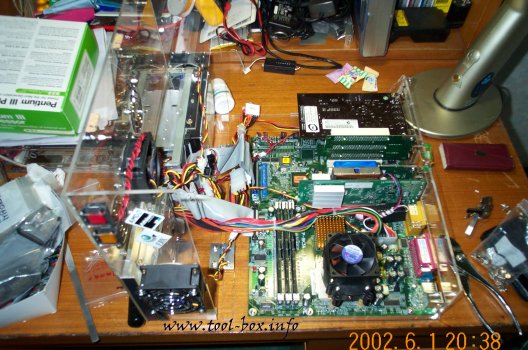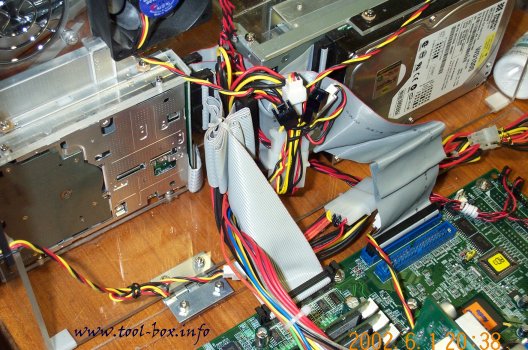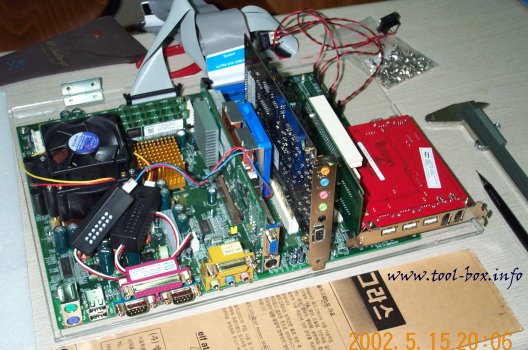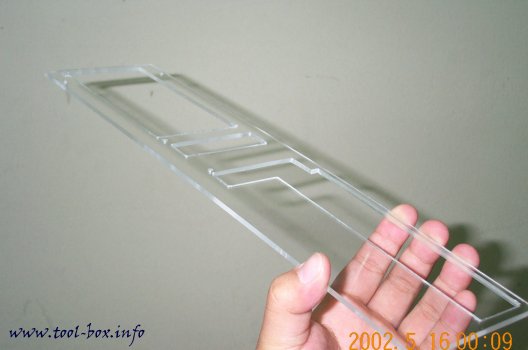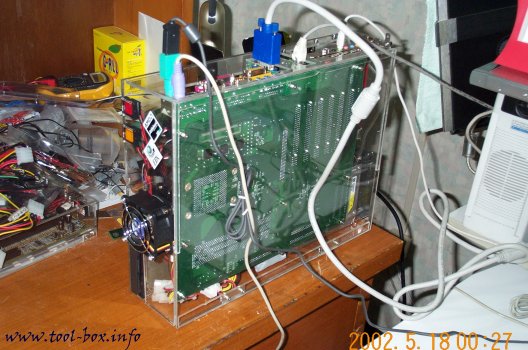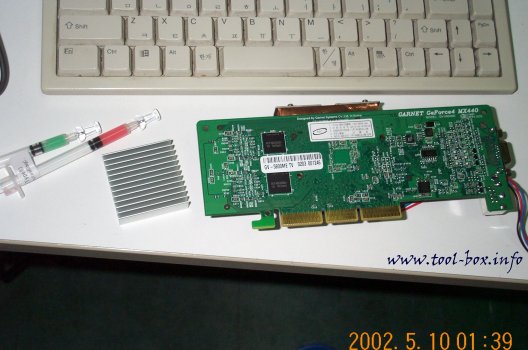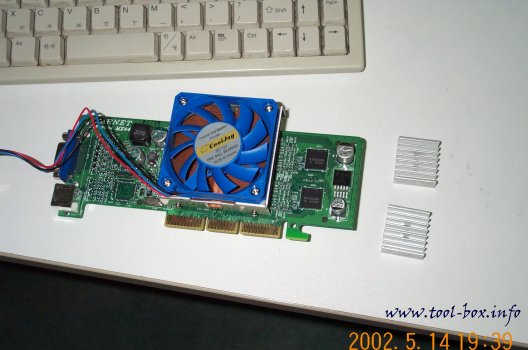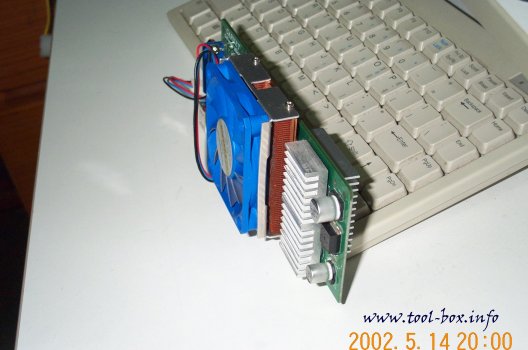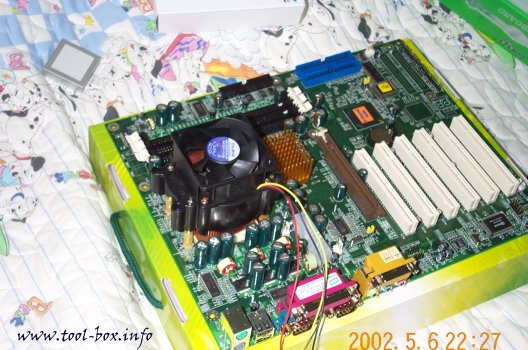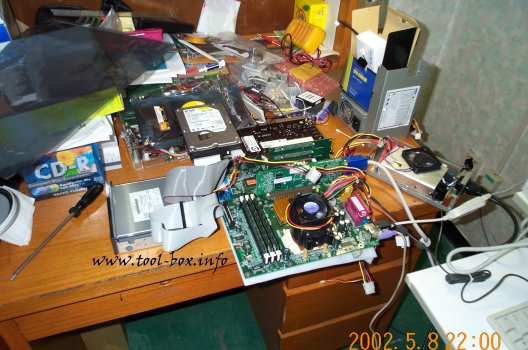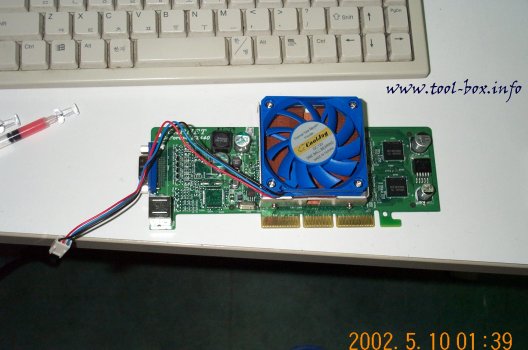The Second Portable Athlon (6/10)
Posted by Wesley on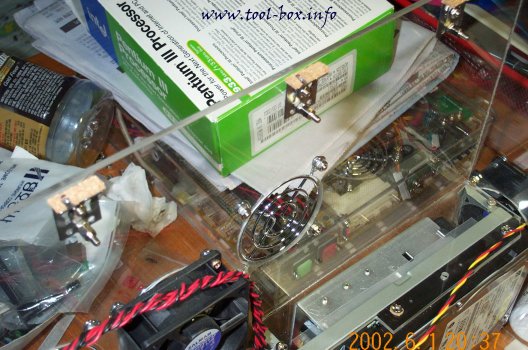
This is the close-up of the tabs where the bolts are screwed on to lock the case closed. I noticed that LED lights could be installed on the lower area to illuminate the innards.
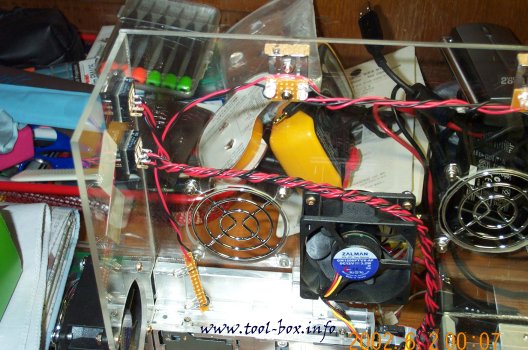
To keep things simple, I used two sets of four high-brightness LED lights connected to 12V rail. One set is blue, and another is green. Maximum operating voltage of a LED used here is 3.3V, so having four of them on 12V rail would give them at least 3.0V, and would not exceed tolerance up to 13.2V, so this is more efficient than pairing them with resistors and connecting them to 5V rail. Each tab would have two LED lights, so six of them would be lighted up from the top of the case, while the last two would be used for lighting up the case logo.
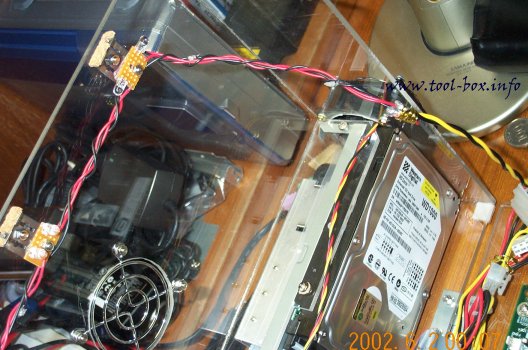
You can see that the LED lights' wires go to the power connector and get powered.
